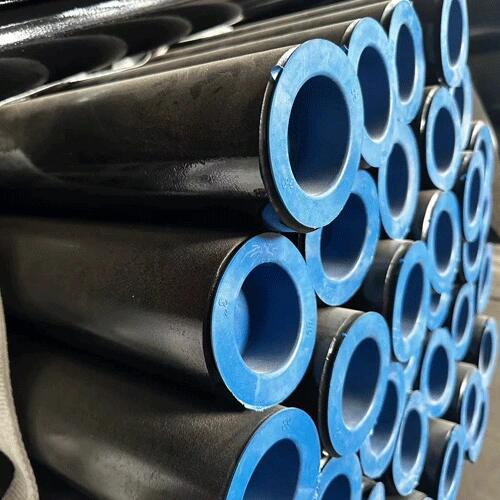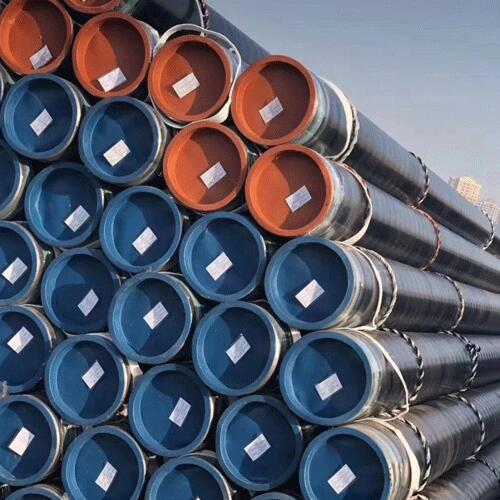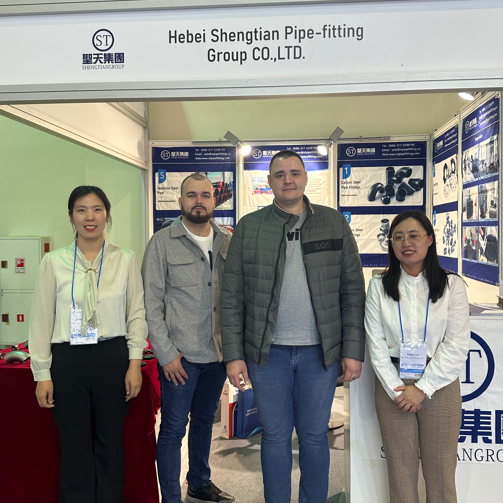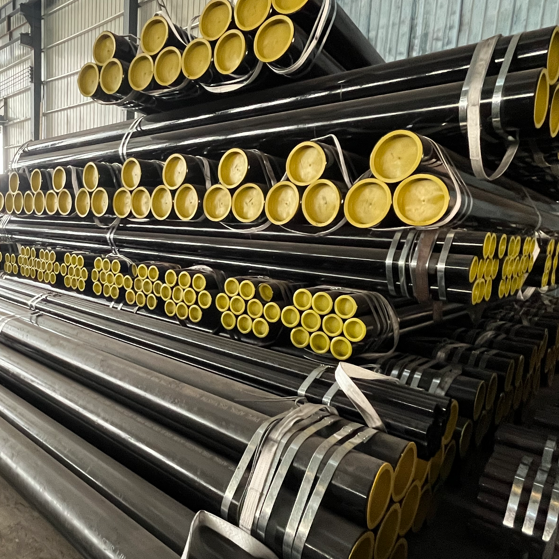1、 Production method of steel
In most steel processing, the steel is processed by pressure to make the processed steel (billet, ingot, etc.) produce plastic deformation. According to different steel processing temperatures, there are two kinds of steel: cold processing and hot processing. The main processing methods of steel include:
Rolling: It refers to the pressure processing method of passing steel metal billets through the gap (various shapes) of a pair of rotating rolls, reducing the material section and increasing the length due to the compression of the rolls. This is the most commonly used production method for steel production, mainly used to produce steel profiles, plates and tubes. It is divided into cold rolling and hot rolling.
Forged steel: A pressure processing method that uses the reciprocating impact force of the forging hammer or the pressure of the press to change the blank into the shape and size we need. It is generally divided into free forging and die forging, and is commonly used for the production of large-sized materials and materials with large size of steel with equal section.
Pulling steel: It refers to the process of drawing rolled metal billets into sections through die holes to reduce the length and increase the processing method, which is mostly used for cold processing.
Extrusion: It refers to the processing method that steel puts metal in a closed extrusion tube and applies pressure at one end to extrude metal from the specified die hole to obtain finished products with the same shape and size. It is mainly used to produce non-ferrous metal steel
1、 Ferrous metals, steel and non-ferrous metals Before introducing the classification of steel, briefly introduce the basic concepts of ferrous metals, steel and non-ferrous metals.
1. Ferrous metals are iron and iron alloys. Such as steel, pig iron, ferroalloy, cast iron, etc. Both steel and pig iron are alloys based on iron and steel, with carbon as the main addition element, which are collectively referred to as iron carbon alloys.
Pig iron refers to the product made by smelting iron ore in the blast furnace, which is mainly used to make steel and steel castings. Cast pig iron is melted in an iron melting furnace to obtain cast iron (liquid). The liquid cast iron is cast into steel castings, which are called iron castings.
Ferroalloy is an alloy composed of iron and silicon, manganese, chromium, titanium and other elements. Ferroalloy is one of the raw materials for steelmaking. It is used as deoxidizer and alloy element additive for steel steelmaking.
2. The pig iron for steelmaking is put into the steelmaking furnace for smelting according to a certain process to obtain steel. The products of steel include ingots, continuous casting billets and straight steel castings. Generally speaking, steel refers to steel rolled into various steels. Steel belongs to ferrous metal, but steel is not completely equal to ferrous metal.
3. Steel nonferrous metals, also known as non-ferrous metals, refer to metals and alloys other than ferrous metals, such as copper, tin, lead, zinc, aluminum, brass, bronze, aluminum alloys and bearing alloys. In addition, chromium, nickel, manganese, molybdenum, cobalt steel, vanadium, tungsten, titanium, etc. are also used in industry. These metals are mainly used as alloy additives to improve the performance of metals. Among them, tungsten, steel titanium, molybdenum, etc. are mainly used to produce cemented carbide for cutting tools. These nonferrous metals are all called industrial metals. In addition to steel, there are precious metals: platinum, gold, silver, etc. and rare metals, including radioactive uranium, radium and other steels.
2、 Classification of steel
Steel is a ferrocarbon alloy with a carbon content of 0.04% - 2.3%. To ensure its toughness and plasticity, the carbon content generally does not exceed 1.7%. In addition to iron and carbon, the main elements of steel include silicon, manganese, sulfur, phosphorus, etc. There are a variety of steel classification methods, and the main methods are as follows:
1. Classification of steel by quality
(1) Ordinary steel (P ≤ 0.045%, S ≤ 0.050%)
(2) High quality steel (P, S ≤ 0.035%)
(3) High quality steel (P ≤ 0.035%, S ≤ 0.030%)
2. Classification according to chemical composition
(1) Carbon steel: steel a. Low carbon steel (C ≤ 0.25%); b. Medium carbon steel (C ≤ 0.25~0.60%); c. High carbon steel (C ≤ 0.60%).
(2) Alloy steel: a. Low alloy steel (total content of alloy elements ≤ 5%); b. Medium alloy steel (total alloy element content>5~10%); c. High alloy steel (total alloy element content>10%).
3. The steel is classified according to the forming method: (1) forged steel; (2) Cast steel; (3) Hot rolled steel; (4) Cold drawn steel.
4. Classification of steel according to metallographic structure
(1) Annealed state: a. hypoeutectoid steel (ferrite+pearlite); b. Eutectoid steel (pearlite); c. Steel precipitation of hypereutectic steel (pearlite+cementite); d. Ledeburite steel (pearlite+cementite).
(2) Normalized: a. Pearlitic steel; b. Bainitic steel; c. Martensitic steel; d. Austenitic steel.
(3) Steel without phase transformation or partially with phase transformation 5. Classification by use
1) Steel for building and engineering: a. Ordinary carbon structural steel; b. Low alloy structural steel; c. Reinforcement steel.
(2) Steel structure steel
a. Steel for mechanical manufacturing: (a) quenched and tempered structural steel; (b) Case hardened structural steel: including carburizing steel, ammonia carburizing steel and surface hardening steel; (c) Free cutting structural steel; (d) Steel for cold plastic forming: including steel for cold stamping and steel for cold heading.
b. Spring steel
c. Bearing steel
(3) Tool steel: a. Carbon tool steel; B. Alloy tool steel; c. High speed tool steel.
(4) Special performance steel: a. stainless acid resistant steel; b. Heat resistant steel: including oxidation resistant steel, heat strength steel and air valve steel; c. Electric heating alloy steel; d. Wear resistant steel; e. Low temperature steel; f. Steel for electrical purposes.
(5) Professional steel - such as bridge steel, ship steel, boiler steel, pressure vessel steel, agricultural machinery steel, etc.
6. Comprehensive classification
(1) Ordinary steel
a. Carbon structural steel: (a) Q195; (b) Q215(A、B); (c) Q235(A、B、C); (d) Q255(A、B); (e) Q275。
b. Low alloy structural steel
c. Ordinary structural steel for specific purposes
(2) High quality steel (including high quality steel)
a. Steel structural steel: (a) high-quality carbon structural steel; (b) Alloy structural steel; (c) Spring steel; (d) Free cutting steel; (e) Bearing steel; (f) High quality structural steel for specific applications.
b. Tool steel: (a) carbon tool steel; (b) Alloy tool steel; (c) High speed tool steel.
c. Special performance steel: (a) stainless acid resistant steel; (b) Heat resistant steel; (c) Electric heating alloy steel; (d) Electrical steel; (e) High manganese wear-resistant steel.
7. Classification according to smelting method
A. Open hearth steel: (a) acid open hearth steel; (b) Basic open hearth steel.
b. Converter steel: (a) acid converter steel; (b) Basic converter steel. Or (a) bottom blown converter steel; (b) Side blown converter steel; (c) Top blown converter steel.
c. Electric furnace steel: (a) electric furnace steel; (b) Electroslag furnace steel; (c) Induction furnace steel; (d) Vacuum consumable furnace steel; (e) Electron beam furnace steel.
 Why should Seamless steel pipes be epoxy powder coated?
Why should Seamless steel pipes be epoxy powder coated?
 ASTM A106 Thick-walled steel pipe production steps
ASTM A106 Thick-walled steel pipe production steps
 Shengtian Group successfully participated in the Russian Oil and Gas Exhibition
Shengtian Group successfully participated in the Russian Oil and Gas Exhibition
 Is API 5L Black Steel Pipe Good For Air Lines?
Is API 5L Black Steel Pipe Good For Air Lines?